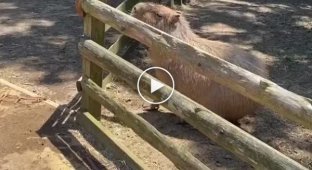8 Amazing Facts About Capybaras: How the Kings of Wetlands and Natural Ottomans Live (10 photos)
Capybaras aren't just cute creatures with friendly faces. These semi-aquatic giants of South America are full of talents that make them some of the most unique animals on the planet. 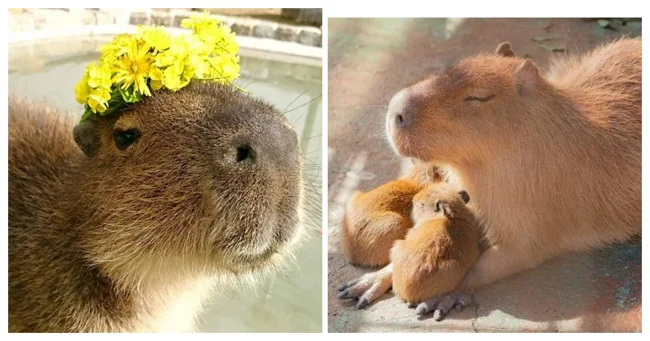
From their ability to swim like fish to their habit of letting people use them as a couch, these interesting facts about capybaras will make you admire these unflappable, philosophical creatures even more.
1. Capybaras - Champions Among Rodents 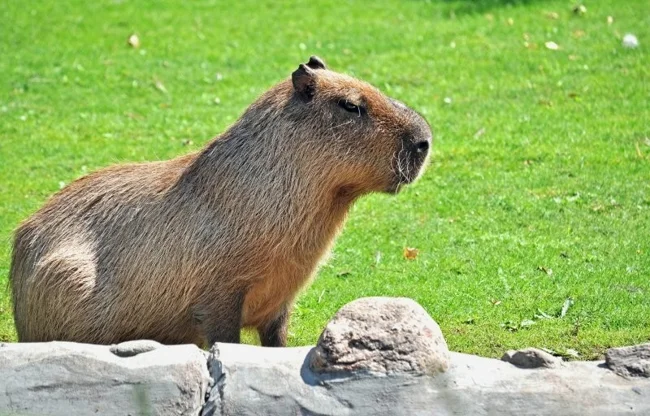
Imagine a rodent the size of a medium-sized dog. The capybara (Hydrochoerus hydrochaeris) is the largest rodent in the world, reaching about 60 cm at the withers and weighing up to 70 kg. They look like a giant cross between a guinea pig and a beaver, only without a tail. More precisely, their tail is vestigial, that is, practically unnoticeable.
There is also their smaller relative - the little capybara (Hydrochoerus isthmius), which, although smaller, is still an impressive creature. These giants live in swamps, meadows and forests, where there is always access to water - their natural element.
2. Masters of Undercover Swimming 
Capybaras are real aces in swimming. Their partially webbed feet and special body structure allow them to glide easily through the water. The eyes, ears and nostrils are located on the top of the head, which allows them to almost completely hide under water, keeping an eye on the surroundings.
These rodents can hold their breath for up to five minutes, hiding from dangerous predators such as jaguars, caimans and anacondas. On hot days, they like to soak in cool water, and mating often takes place right there - they are real aquatic romantics.
3. Teeth that grow endlessly 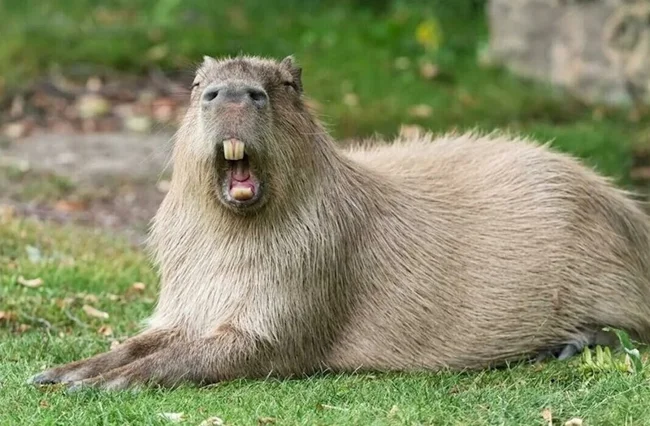
Capybaras have two powerful front teeth that never stop growing. These strong, chisel-like incisors are ideal for cutting grass and other plants. To control the length of their teeth, capybaras constantly grind their food, chewing grass, bark and fruit.
Interestingly, their molars also grow throughout their lives, but wear out due to constant chewing of coarse greens. Such dental gymnastics helps them digest food effectively.
4. Social Grandmothers of the Swamps 
Capybaras are true team players. They live in groups of 10 to 30 individuals, where each plays its own role. Females raise their cubs together, and young capybaras receive care from several mothers.
However, males sometimes stage demonstrations of strength (for example, head-on collisions) to establish hierarchy. But the group keeps a close eye on the babies, who are especially vulnerable to predators. The herd works as a single organism: if someone notices danger, they give a signal, and everyone immediately hides in the water or thickets.
5. Voices of the swamp jungle 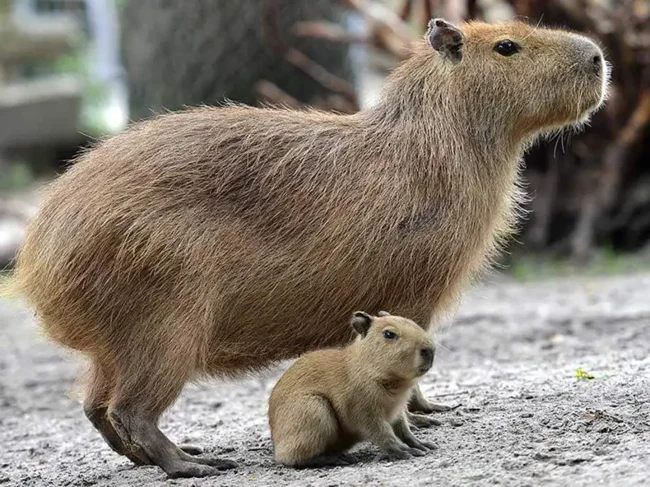
Capybaras are real singers of their world. They communicate with the help of unique sounds: chattering teeth, squeals, whining, whistling, crying, barking and clicking. Each sound has its own meaning: a warning of danger, a call to action or control over the offspring.
Young capybaras are especially noisy, almost constantly talking with their parents. This creates an atmosphere of a real swamp choir that echoes throughout the surrounding area.
6. Vegetarians with an appetite 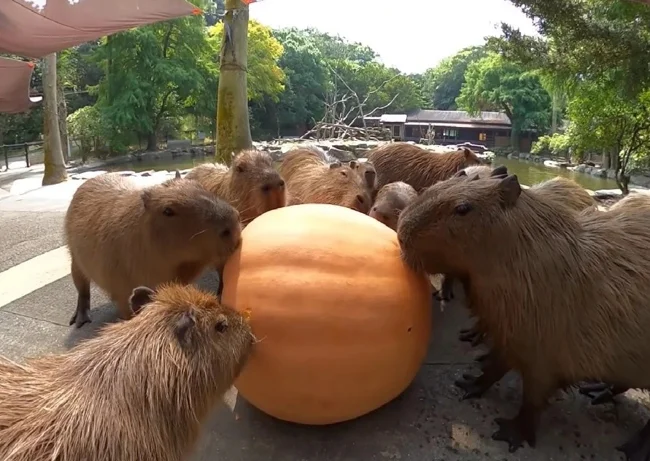
Capybaras are avid green-eaters. Their diet includes aquatic plants, grass, fruits and bark. Adults eat up to 3.5 kg of food per day.
In the dry season, when there is less grass, they adapt their diet by adding reeds, cereals, melons and pumpkins. To avoid encounters with predators, capybaras prefer to eat early in the morning or evening, when the heat subsides and the danger is minimal.
7. Coprophages: Why They Eat Their Poop 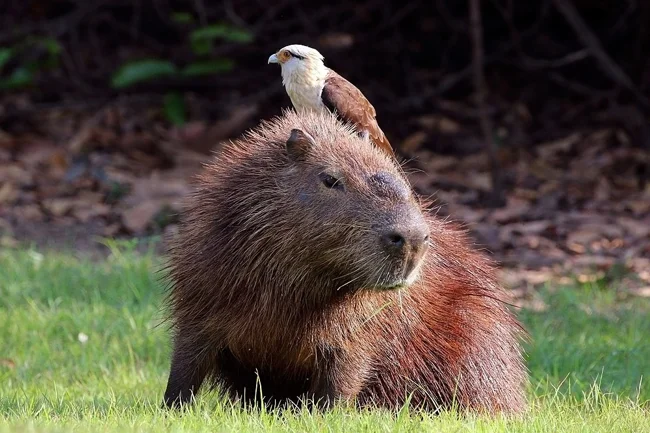
Yes, that's right: capybaras eat their poop. This process is called coprophagy, and it's vital for their digestion. Since the grasses they eat are difficult to digest, this repeated meal allows the body to get the most nutrients.
Every morning, capybaras start their day with this specific procedure, which provides them with the necessary bacterial flora for proper digestion.
8. Nature's Ottomans 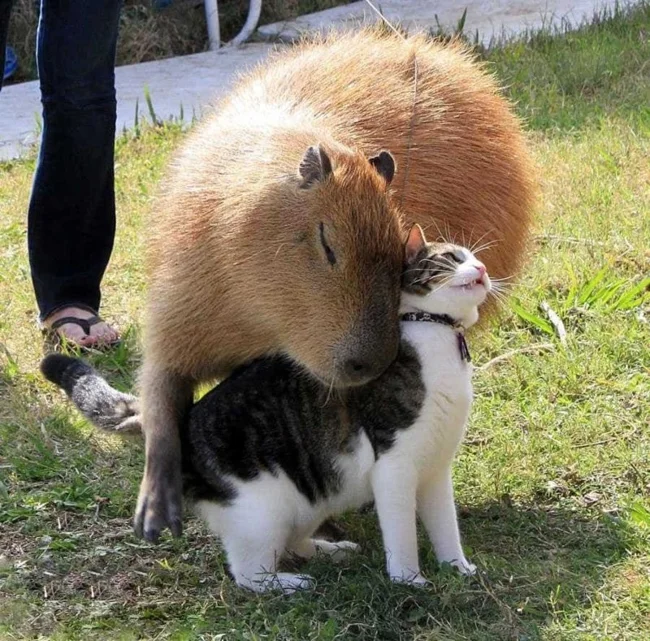
Capybaras are known for their openness and friendliness towards other animals. They often serve as living sofas for birds, such as the yellow-headed caracara, which sit on their backs to eat insects.
Capybaras also have commensal relationships with birds, such as the cow tyrant. These birds travel with the capybaras, catching insects that they discover during their walks. This mutually beneficial friendship has made the capybara a symbol of harmony in nature. 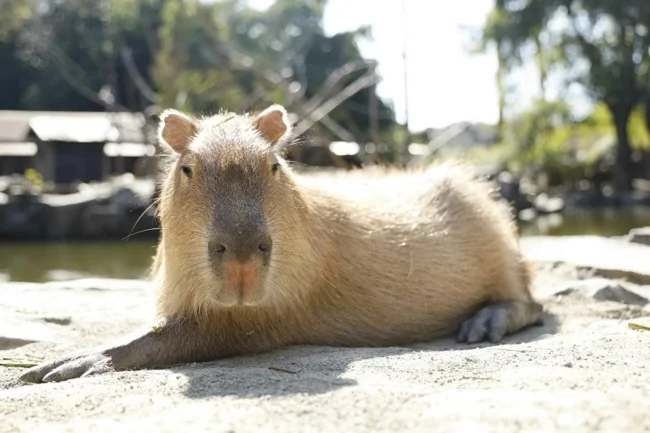
Capybaras are more than just rodents. They are masters of life, combining strength, sociality, and amazing adaptability. These good-natured giants continue to win the hearts of people around the world with their easy-going nature and unique lifestyle.












